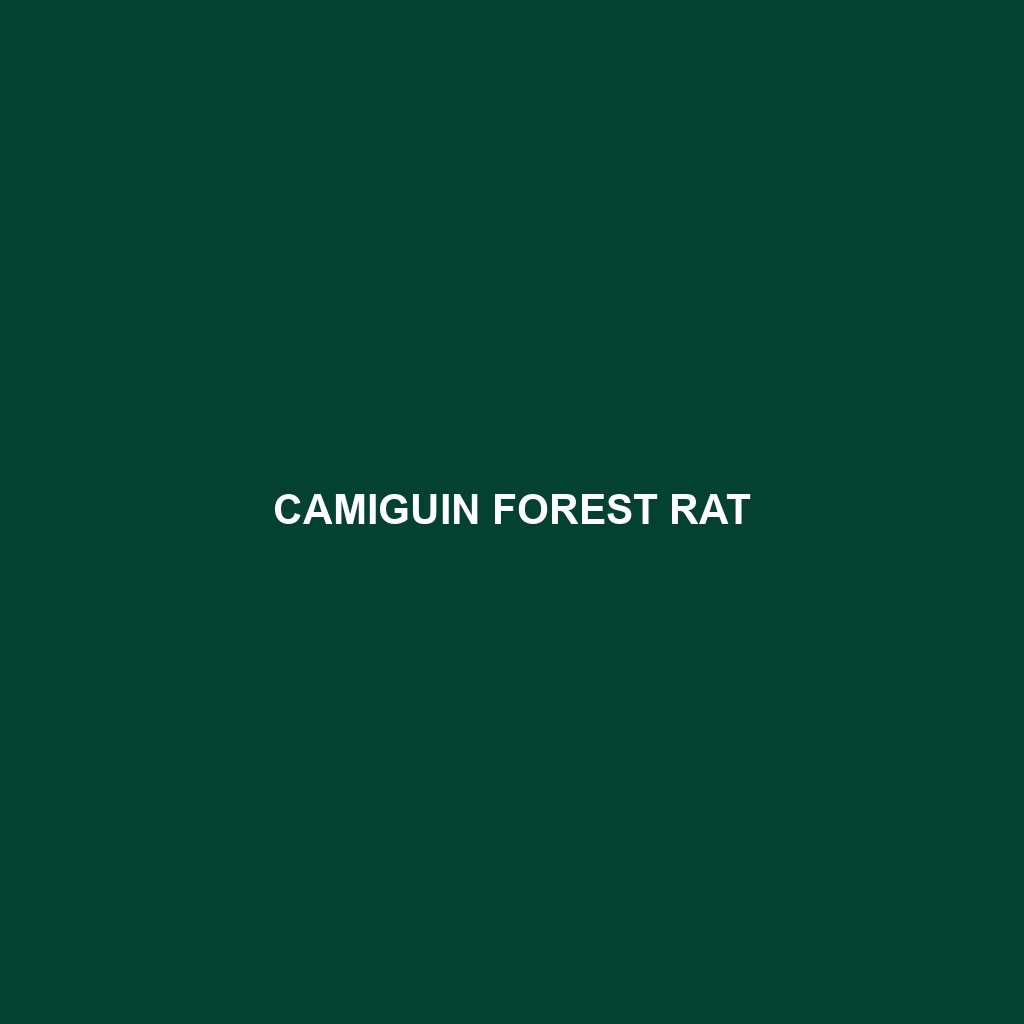Camiguin Forest Rat ()
Common Name: Camiguin Forest Rat
Scientific Name:
Habitat
The Camiguin Forest Rat primarily inhabits the lush tropical forests of Camiguin Island in the Philippines. This region is characterized by its diverse ecosystems, including dense montane forests, coastal mangroves, and rich biodiversity. The typical altitudes range from sea level to about 1,500 meters, with a preference for moist and humid environments rich in foliage.
Physical Characteristics
The Camiguin Forest Rat is a medium-sized rodent, typically measuring between 20 to 25 cm in body length, excluding the tail. Its coat is a soft, dark brown, providing excellent camouflage in the forest undergrowth. Distinctive features include large, rounded ears, a slender body, and a long, tufted tail which aids in balancing as it navigates through the trees. The species also has notable adaptations, like large claws for climbing.
Behavior
This species exhibits nocturnal behavior, emerging primarily at night to forage for food. Camiguin Forest Rats are known for their agility in climbing and for their social structures, often seen in small family groups. They communicate using high-pitched squeaks, especially during mating season. Their territorial nature is highlighted as they mark their surroundings with scents.
Diet
The diet of the Camiguin Forest Rat is omnivorous, primarily consisting of fruits, seeds, and nuts found in its forest habitat. Additionally, it consumes insects and small invertebrates when plant sources are scarce. This adaptability in feeding habits allows them to thrive in varying conditions, particularly during dry seasons when fruit is less abundant.
Reproduction
Breeding occurs once or twice a year, with the peak breeding season typically observed during the wet months. The female Camiguin Forest Rat usually gives birth to 3 to 5 young after a gestation period of about 30 days. Young rats are born hairless and blind, requiring a nurturing environment provided by the mother. Weaning occurs after about three weeks, and the young begin to forage with the mother shortly thereafter.
Conservation Status
The Camiguin Forest Rat is currently listed as endangered due to habitat loss and fragmentation caused by deforestation and urban expansion. Conservation efforts are crucial to preserve its natural habitat and ensure the survival of this unique species.
Interesting Facts
One fascinating aspect of the Camiguin Forest Rat is its role in seed dispersal, which contributes to the regeneration of forest plants. Moreover, researchers have discovered that this rat species is an important indicator of forest health, making it a focal point for ecological studies in the region.
Role in Ecosystem
The Camiguin Forest Rat plays a vital role in its ecosystem as both a herbivore and prey species. Its foraging habits facilitate the dispersal of seeds, thus supporting forest regeneration. Additionally, it serves as a food source for larger predators, contributing to the overall food web on Camiguin Island.
